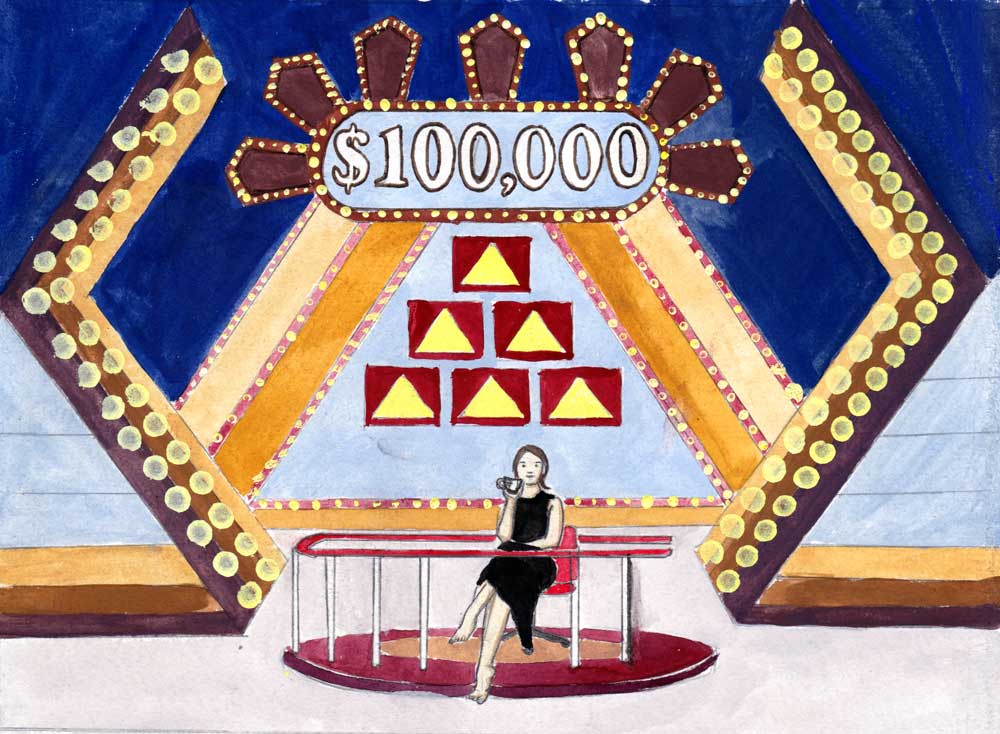I value the bravery of vulnerability.
Editor’s note: This month on Stance on Dance, several dance artists have been asked to share a pivotal dance experience that changed their trajectory or the way they think about dance.
BY CHRISTY FUNSCH; ILLUSTRATION BY TRACEY TURNER
Julie Mayo’s Softspace/as if it were night
Highways Performance Space, Los Angeles, CA 2010
Julie enters the space and asks for two volunteers. I eagerly comply, knowing she is nervous on this opening night and wanting to support her. She escorts the two of us out into the hallway lobby at Highways. She thanks us for coming and what follows is an awkward pause. Julie becomes emotional; her voice falters and her eyes well up. “Oh no,” I think. “This isn’t good.” She starts apologizing, and tells us she “isn’t prepared.” I am shocked. She is always prepared and meticulously rehearsed. What is going on? She repeats her apology again and again until it hits me—“Oh, okay, here we are in the piece.” The piece has started and I’m the last to know.
This initial apology, that sets off the work Softspace/as if it were night — Brooklyn-based Julie Mayo’s quartet from 2010-11 — completely readies me for what ensues: abstract movement stripped of theatricality, task-like games, groupings and relationships that dissolve just as they nearly coalesce, interjections of autobiographical-seeming confessions…she has put me in a receptive state of mind through her preliminary performance of vulnerability. I am ready for anything, and I want to help her get through it!
There is a hilarious insert, along the lines of the 1970s game show $100,000 Pyramid where Julie lists “things that are associated with things” (as per the game show’s tag line). In this section Julie also recruits a volunteer from the audience to keep time for her. There is something about stepping in to help out, to assist her, to move the piece along that strikes me as natural, inevitable, and not gimmicky or uncomfortable. It’s as if we are asked to play with her, to jumble tasks, to work on a puzzle. And again, what she is facilitating is receptivity and buy-in. Such a state makes the abstraction go down more smoothly.
In still another section of the work, Julie delivers seeming-autobiographical text, complete with coffee, where she plays with performance theory as if it were yet another prop and accompaniment, undercutting its academic resolve and armchair (i.e. inactive) projections.

Wait, can she do that? And what is its effect on me? And how does it frame my viewing experience of the rest of the piece? What is its function? Such questions involve me in her piece, and heighten my viewing experience. But more significantly, Julie’s unguarded performance persona and her valuing of the unexplained and non-virtuosic, especially situated within the complex theory of her content, changed my ideas around post-modernist meta-dance. I have experienced plenty of works that berate the audience, that insult the viewer and make assumptions about the viewer’s supposedly provincial point of view (even though the work is being presented to an audience made up exclusively of the performers’ colleagues and peers). Instead of this self-aggrandizing approach, Julie brought me in to her work through self-deprecating humor. It was an incredible relief to not feel scolded or reprimanded. I realized how much I value the bravery of vulnerability. And to be hit with a realization of what one values is a shattering and unforgettable experience.
For more information on Christy Funsch’s work, visit www.funschdance.org.
